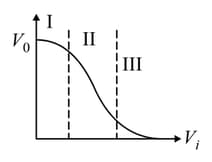A transistor oscillator is
(i) An amplifier with positive feedback
(ii) An amplifier with reduced gain
(iii) The one in which DC supply energy is converted into AC output energy. Then
Important Questions on Semiconductor Devices and their Applications
Given below are two statements : One is labelled as Assertion A and the other is labelled as Reason R.
Assertion(A) : transistor permits more current than a transistor.
Reason(R) : Electrons have greater mobility as a charge carrier.
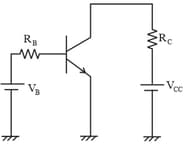
The transfer characteristic curve of a transistor, having input and output resistance and respectively, is shown in the figure. The voltage and power gain, are respectively:
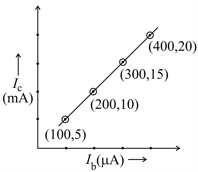
The transfer characteristics for a transistor in mode is as shown in figure. To use transistor as a switch, it should be used in
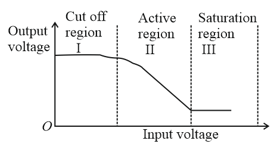

In the circuit shown, the value of of the transistor is . If the supplied base current is , what is the voltage at the terminal ?
An n-p-n transistor has three leads A, B and C. Connecting B and C by moist fingers, A to the positive lead of an ammeter, and C to the negative lead of the ammeter, one finds large deflection. Then, A, B and C refer respectively to :
The output characteristics of a transistor is shown in the figure. When is and , then value of is
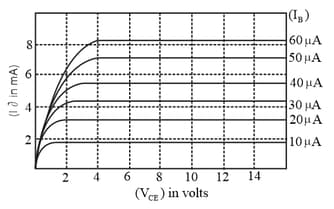
In the following common emitter circuit, and . If is negligible, then the base current is
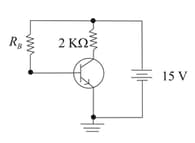
In the figure, given that supply can vary from to and The minimum base current and the input voltage at which the transistor will go to saturation, will be, respectively:

